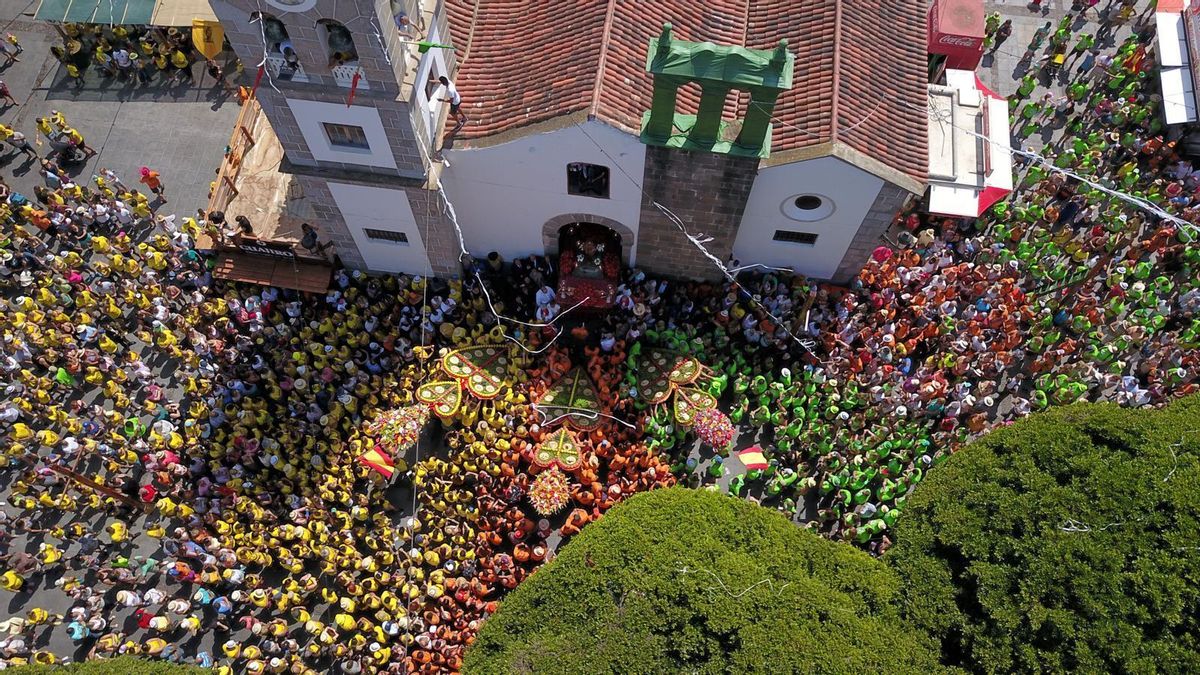- Rosa Dávila Unveils the Most Ambitious Protection and Security Strategy in the Region for Volcanic Risks
- The Tenerife Council has mobilised over 1,000 individuals, including public officials, specialised technicians from organisations, and social groups, to collaboratively prepare for volcanic eruptions, flooding, wildfires, and other emergencies.
- The first volcanic emergency drill in the national territory will take place in Garachico this September.
Rosa Dávila Unveils the Most Ambitious Protection and Security Strategy in the Region for Volcanic Risks
The Tenerife Council has mobilised over 1,000 individuals, including public officials, specialised technicians from organisations, and social groups, to collaboratively prepare for volcanic eruptions, flooding, wildfires, and other emergencies.
The first volcanic emergency drill in the national territory will take place in Garachico this September.
The Tenerife Council is reinforcing its defences against insular risks and emergencies through a new protection and security strategy. This is the first of its kind nationwide, aimed at bringing together over 1,000 individuals from organisations, specialists, and emergency services capable of responding to volcanic risks, wildfires, flooding, or other potential disasters.
Rosa Dávila, the Council President, explained that “we now have better data, a stronger network of experts, and improved organisation. This is a brave decision, calling for calm, as the risk will not disappear, and we must deploy all necessary resources.” For the first time, an island in the Canary archipelago has reached the preparedness levels of Iceland or Japan, assured Dávila, to “ensure maximum readiness.”
Over the past year, the Insular Council has implemented a series of safety measures that now enable us to state that Tenerife is a safer island. The budget for this area has been increased by 31%, approaching 181 million euros, and the number of firefighter positions on the island has risen by around fifty. More than 100 hours of training courses have also been provided to municipal civil protection teams. Additionally, the Tenerife Council has allocated an extra 5 million euros for emergency response materials and interventions.
Innovation in security has been fundamental, as Tenerife will be monitored both from space and on land. The establishment of the Canary Islands constellation enhances surveillance and risk detection capabilities. The increase in the number of detectors now enables monitoring of 94% of the insular territory.
According to Blanca Pérez, the Council’s Councillor for Security, Emergencies, and Natural Environment, “Tenerife needed to take a giant step in this area, which is why we have designed a map of logistical intervention points and created support and mobility structures for areas that could potentially be affected by a volcanic eruption.” Plans such as Salvaguarda and Abastecimiento help safeguard historical municipal buildings against risks and establish pharmacies in emergency zones as distribution points for medication for affected individuals, respectively.
Collaboration with the island’s 31 municipalities is crucial, leading to the development of their Municipal Emergency Plans (PEMUS). The head of Insular Civil Protection, Néstor Padrón, stated that “training for civil protections and the updating of these plans will improve management levels and prepare citizens across the island.”
For the Insular institution, taking the initiative is vital; however, collaboration with specialised organisations will ensure a mechanism that mitigates risks. Therefore, cooperation plans have been signed and activated with the Red Cross to develop training and awareness actions. Moreover, collaboration with experts from Involcan, the National Geographic Institute, the Higher Council for Scientific Research, the State Meteorological Agency, and the universities, will be coordinated to provide the best guidance for managing increasing risks.
Involcan’s Volcanic Surveillance Director, Luca D’Auria, has noted that this preparatory work is critical “now that we are in a phase of calm.” This allows the public to be informed about potential risks and necessary actions in case of an emergency, although he highlighted that “currently there are no signs of magma movements beneath the earth’s surface, but the recorded movements and swarms are due to hydrothermal activity and normal gas emissions for a volcanic terrain like Tenerife.”
The EU MODEX – GARACHICO Drill
As part of this Security and Protection strategy for Tenerife, the EU MODEX – Garachico project will conduct a real volcanic emergency drill for the first time nationally. Similar actions have only been carried out in islands such as Stromboli or Sicily in Italy, as well as in Hawaii.
Fully organised and structured by the Tenerife Council, the project will receive technical support and oversight from European experts, monitoring the risks and incidents of the volcanic emergency taking place in Garachico from 22nd to 28th September 2025.
During these days, various working groups will analyse how the emergency increases as the signs of eruption emerge. There will be multiple tracking points for the local population, who will also receive alerts via the ES-ALERT system. An actual evacuation will take place from a designated area of the municipality, and an advanced command post will be established with all state security forces, medical personnel, experts, and technical teams from the Canary Government and the Insular Council.














